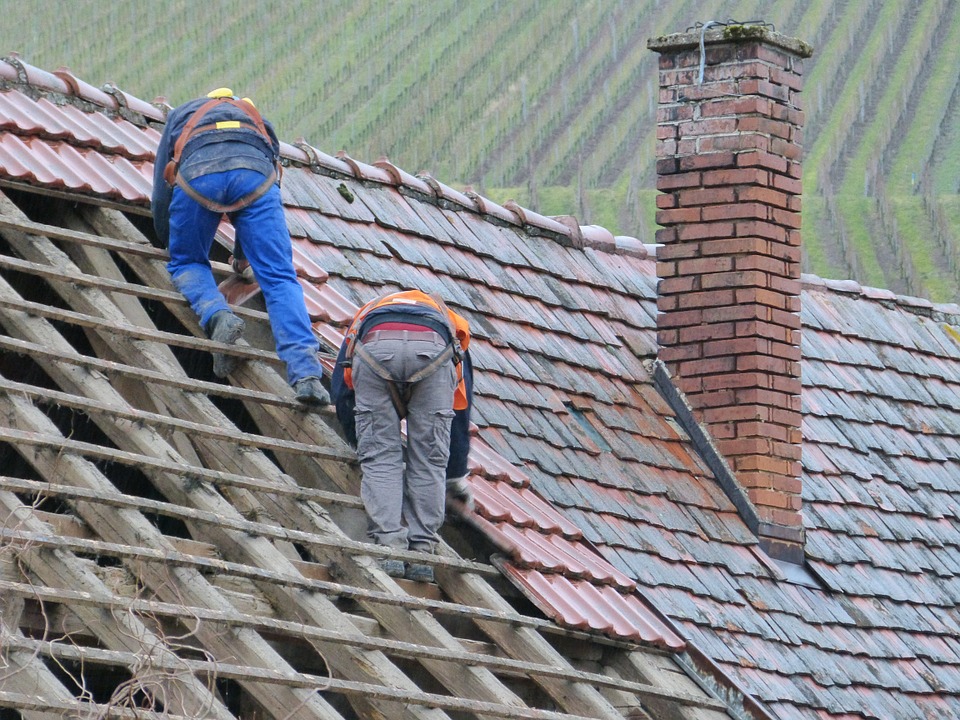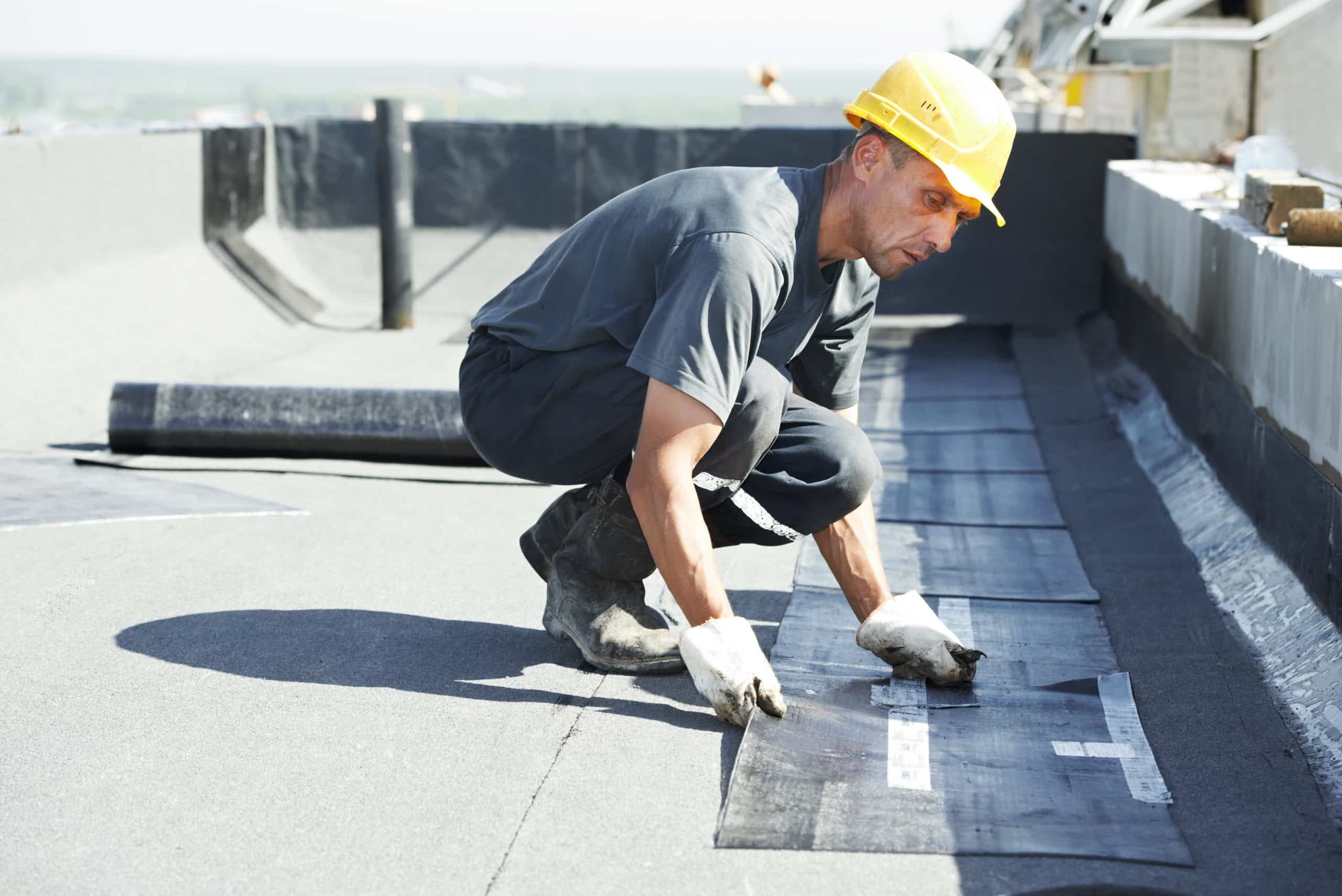How to Recognize Indications That Common Roof Covering Repair Work Is Required on Your Building
Recognizing indications that typical roofing fixing is required on your residential or commercial property is vital for maintaining the integrity of your home. Normal evaluations can expose subtle signs, such as missing or harmed shingles and the visibility of granules in gutters, which may recommend damage.
Missing Out On or Damaged Shingles
One of one of the most visible signs of potential roof problems is the presence of missing out on or harmed tiles. These components function as the first line of protection against the elements, and their integrity is essential for keeping the general health and wellness of a roof. When roof shingles are missing out on, fractured, or crinkled, it exposes the underlying layers of the roofing system to dampness and environmental damage, causing extra severe difficulties over time.

It is important to carry out routine evaluations, particularly after severe weather condition events such as storms or hail. Homeowners need to try to find indications of deterioration, consisting of discoloration, granule loss, or visible wear along the edges of the roof shingles. Furthermore, the visibility of busted or warped shingles can interfere with the visual allure of a residential property and might signal an urgent requirement for fixings.

Leakages and Water Stains

Identifying leakages and water spots is crucial for preserving the integrity of a roofing. These indicators typically signal underlying concerns that, if left unaddressed, can bring about substantial architectural damages and pricey fixings. Water stains typically appear as tarnished spots on ceilings or wall surfaces, typically with a yellow or brown tone, indicating that moisture has penetrated the roofing product.
To successfully evaluate for leakages, check both the exterior and interior of your home. Inside, search for any kind of signs of water damage, such as sagging ceilings or peeling paint. Outside, take a look at the roofing for missing out on tiles, damaged flashing, or any kind of infiltrations where water may infiltrate. Pay close focus to areas around vents, chimneys, and skylights, as these are usual resources of leakages.
Furthermore, inspect your attic for proof of dampness or mold and mildew development, which can even more suggest roofing system leakages. If you discover relentless leaks or water stains, it may be important to consult a professional roof covering contractor. Early recognition and timely repair work of leakages can help preserve the life-span of your roof covering and avoid much more comprehensive damage.
Moss and Algae Development
Moss and algae growth on a roofing system can significantly compromise its efficiency and durability. These microorganisms flourish in damp, shaded locations, often bring about an array of issues if left unchecked. Moss, particularly, can preserve moisture versus roof materials, which can add to the degeneration of shingles and underlayment. In time, this dampness retention can bring about timber rot and mold growth, potentially resulting in expensive repair services.
Algae, on the other hand, mainly manifests as dark streaks on the roof covering surface area. While it might not trigger instant structural damage, algae can signal underlying concerns such as entraped moisture. In addition, the visibility of algae can reduce the aesthetic charm of a residential or commercial property and might lower its market price.
To deal with moss and algae development, it is necessary to do routine roof covering examinations, especially after periods of hefty rainfall. Specialist cleaning company can securely remove these microorganisms using specialized approaches that do not damage roof covering materials. Preventative measures, such as making sure proper water drainage and trimming looming branches, can also minimize future growth. additional hints By keeping a clean roof covering, homeowner can prolong the lifespan of their roof and preserve their investment.
Drooping Roofing Deck
The presence of moss and algae on a roof can indicate underlying concerns that might bring about much more significant issues, such as a sagging roofing deck. honolulu roofing. A drooping roof deck is an indication of structural weak point and need to be dealt with immediately to avoid further damage. This condition usually arises from prolonged moisture exposure, which can compromise the supporting structures, including rafters and trusses
To determine a see it here drooping roof covering deck, inspect the roof from both the exterior and interior. Look for visible dips or anxieties in the roofing surface, in addition to indications of water damages, such as tarnished ceilings or wall surfaces. Inside evaluations might disclose a bowing look in the roofline or cracks in the drywall.
Another crucial aspect to observe is the positioning of roofing system features, such as chimneys and vents. If these components show up misaligned, it may indicate that the roof deck is changing.
If you identify any type of indications of sagging, it is important to speak with a qualified roof covering specialist. They can examine the degree of the damage and recommend essential fixings to bring back the roofing system's structural honesty, making sure the safety and long life of your residential or commercial property.
Granules in Gutters
Amidst routine roof upkeep, discovering granules in seamless gutters can work as an essential indication of putting in jeopardy roof concerns. Roofing granules are the protective layer on asphalt tiles, developed to secure them from UV rays and weather condition damages. In time, exposure to the aspects can cause these granules to loosen up and get rid of, causing significant degeneration of the roofing product.
The presence of granules in seamless gutters typically indicates that your tiles are nearing the end of their life-span or have suffered damages from serious climate condition. If you notice a considerable build-up of granules, it is vital to investigate additionally. Check your roofing system for indicators of hairless spots or discoloration, which can suggest that the roof shingles are falling short.
Additionally, consider the capacity for water infiltration. As roof shingles shed their granules, they come to be more susceptible to leaks, resulting in expensive indoor damages. Routine examinations and punctual repairs can help reduce these dangers. If you constantly discover granules in over here your rain gutters, seek advice from a roof covering specialist to examine the problem of your roof covering and determine if repairs or a replacement are required. Early intervention can save you time and money in the future.
Final Thought
Finally, regular evaluations of roofing materials are important for identifying indicators that usual roof covering fixings might be essential. Observing missing out on or harmed roof shingles, water stains, and moss or algae development can suggest underlying problems that require attention. Signs of a drooping roofing deck and the presence of granules in gutters must not be neglected, as these factors might add to substantial degeneration and pricey repairs. Proactive evaluation can reduce possible damage and expand the life expectancy of the roof.